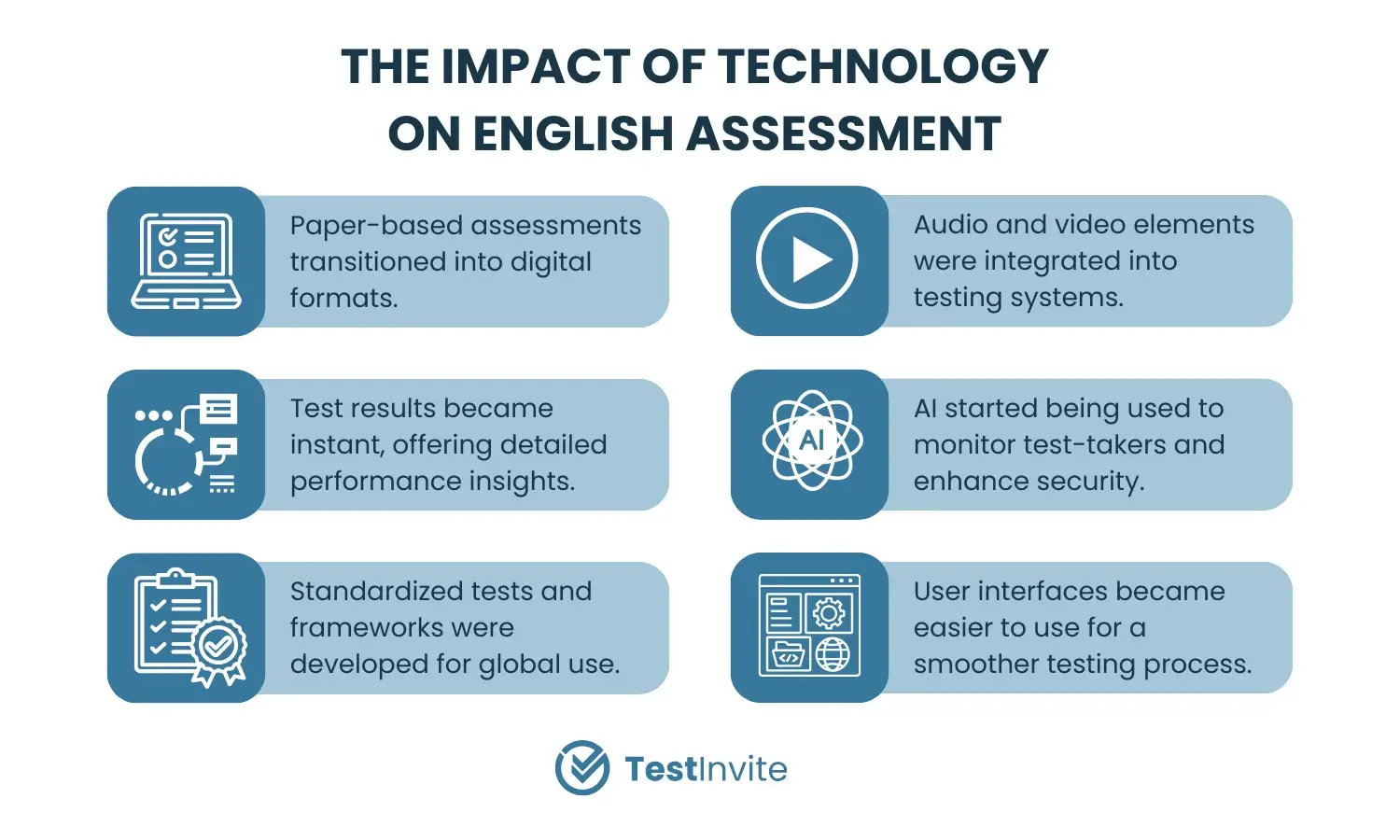All Resources
The landscape of English proficiency testing has undergone a profound transformation, driven by the relentless influence of technology. This metamorphosis has not only redefined assessment methodologies but has also enhanced accessibility and the overall learning experience. Here, we explore essential aspects that highlight the significant influence of technology on the development of English proficiency testing.
The integration of technology has shifted traditional paper-based assessments to advanced online platforms. This transformation empowers candidates to engage in English proficiency tests remotely, liberating them from geographical constraints and introducing unparalleled flexibility.

Modern English proficiency tests integrate interactive and multimedia components, such as audio and video elements. This not only heightens the authenticity of assessments but also mirrors real-world communication scenarios encountered in professional environments.
Technology facilitates instant feedback and swift delivery of test results. Test-takers gain detailed insights into their performance, including strengths and areas for improvement, enabling targeted and effective learning strategies.
Addressing security concerns tied to remote testing, technology introduces robust remote proctoring solutions. These systems leverage AI to monitor test-takers, ensuring the integrity of the assessment process.
Technology acts as a facilitator, fostering collaboration among language testing organizations globally. This collaboration has resulted in the development of standardized tests and frameworks, ensuring consistency in assessment practices and enabling international benchmarking of language proficiency.
Online testing platforms boast user-friendly interfaces, contributing to a smoother testing experience and allowing candidates to focus on showcasing their language proficiency without navigating complex systems.
In conclusion, the infusion of technology into English proficiency testing not only expands accessibility but also elevates precision, efficiency, and overall quality. As technology advances, the trajectory of language testing is poised for further innovation, benefiting both test-takers and organizations keen on evaluating and enhancing language skills within their workforce.